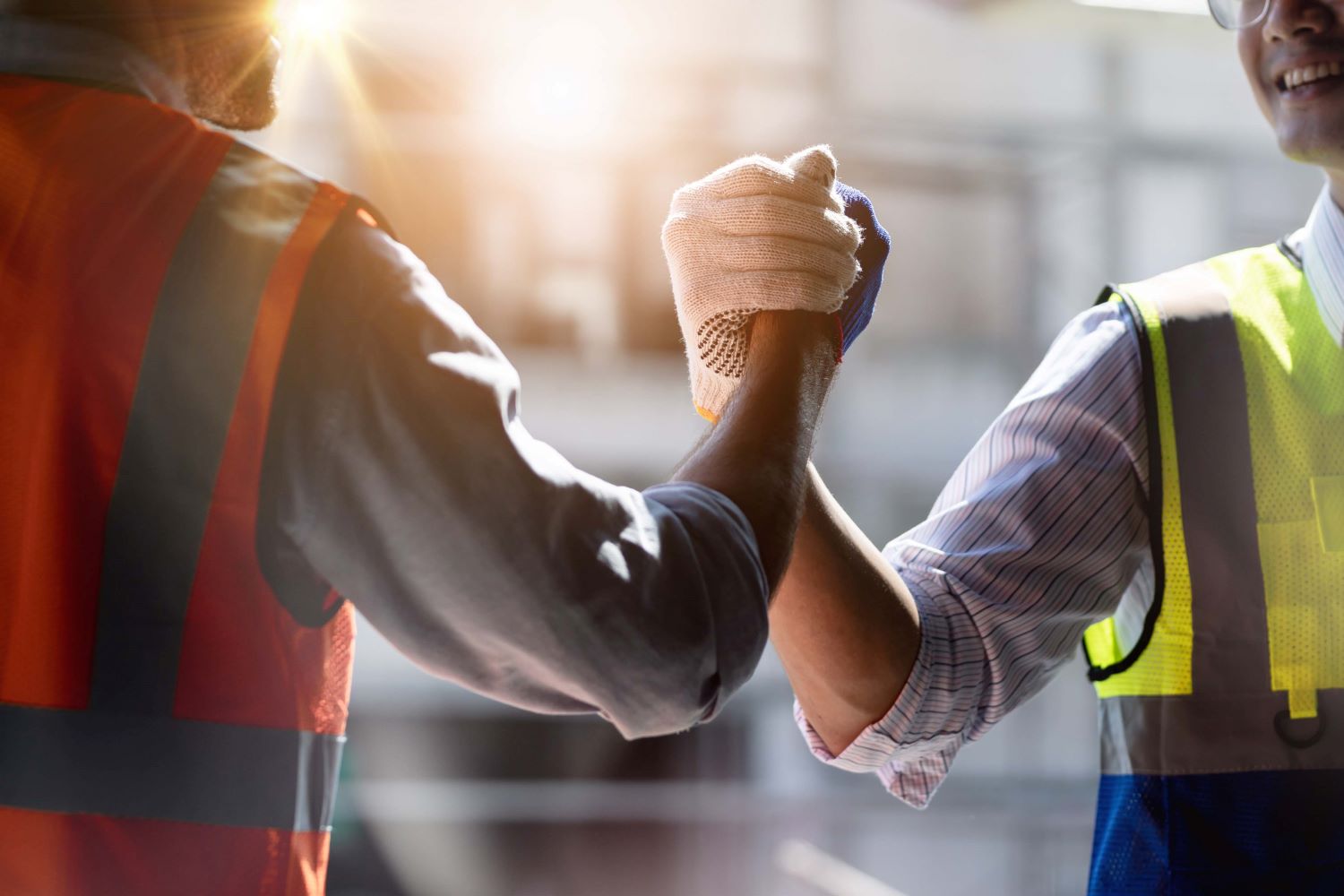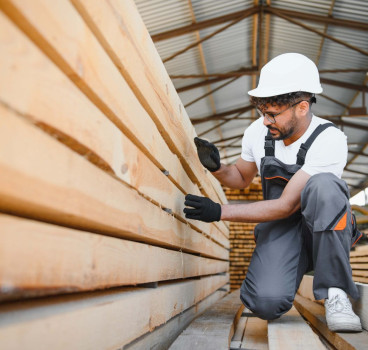Lost in translation - how language barriers endanger construction workers
Language barriers on construction sites pose a significant threat to worker safety and can lead to serious accidents and even fatalities. A recent study published in the American Journal of Industrial Medicine found that foreign-born workers in the US are more likely to experience work-related injuries compared to native-born workers and the National Institute for Occupational Safety and Health (NIOSH) estimates that language barriers are a contributing factor in 25% of all on-the-job accidents.
It presents a major challenge for construction companies, but more is being done to reduce risks and improve communication with non-English speaking workers – and new technology is playing a major role, writes John Ridgeway.
Getting the right data is the immediate problem. Construction site accidents are often attributed to the most immediate cause (e.g., falling from heights) without considering contributing factors like language barriers, which can make it difficult for non-English speaking workers to report incidents or near misses.
The high cost of miscommunication
The construction industry is inherently risky. Workers face a multitude of hazards, from falls and falling objects to electrical dangers and exposure to hazardous materials. Language barriers exacerbate these risks by hindering communication of vital safety information.
Misunderstandings of instructions, for example, related to scaffolding erection, load limits, or fall protection systems could lead to workers falling from heights. There is also evidence to suggest that if workers do not fully understand warnings about equipment operation or safety protocols, they could be injured by malfunctioning equipment or moving vehicles.
Furthermore, we know that clear communication is crucial when working with hazardous materials like lead paint or asbestos. Without proper understanding of safety data sheets (SDS) or verbal instructions, workers could be exposed to harmful substances.
Equally as important, during an emergency evacuation or fire drill, clear communication ensures everyone needs to know where to go and how to stay safe. Language barriers can create confusion and delay in such situations.
A growing problem
The construction industry is becoming increasingly diverse. According to the Bureau of Labor Statistics, in 2022, foreign-born workers made up 28.3% of the construction workforce in the United States. This trend is mirrored in many developed countries around the world. As the workforce becomes more diverse, so too does the potential for language barriers.
Fortunately, there are steps that are being taken to address this problem and ensure a safe work environment for all – and they continue to be widely adopted by construction companies across the globe.

We are seeing more safety training in multiple languages. Providing safety training materials and conducting orientations in multiple languages is crucial. Visual aids, pictograms and demonstrations are also being used for overcoming language barriers.
On-site interpreters to facilitate communication between workers and supervisors who don't speak the same language are also being increasingly used. English language classes for workers are also empowering them to better understand safety protocols and participate more actively in the workplace.
For supervisors and managers, cultural sensitivity training is helping to is further bridge the gap in understanding safety practices from different cultural perspectives.
Technology, as we have already mentioned, is also playing a role in overcoming language barriers. While not a perfect solution, translation apps are providing basic communication and assistance with understanding safety instructions. Augmented Reality (AR) glasses or headsets with real-time translation capabilities, are also being used to overlay safety information onto a worker's field of view in their native language.
Furthermore, the use of wearable technology like smartwatches with real-time translation features or voice-activated safety alerts in a worker's native language could become more widespread in the future.
Building a culture of safety for all
A crucial aspect of overcoming language barriers goes beyond just communication. It's about fostering a culture of safety where all workers feel comfortable asking questions, reporting hazards and seeking clarification, regardless of their language skills.
This is being achieved by encouraging more open communication, with supervisors helping to create a work environment where workers feel safe to speak up, even if they are struggling with language.
Construction companies are also recognising and rewarding workers who demonstrate safe work practices and encourage others to do the same. That said, regardless of language, all workers should understand the consequences of neglecting safety protocols.
Organisations like the Occupational Safety and Health Administration (OSHA) in the US and the International Labour Organization (ILO) are developing best practices and resources to help construction companies address language barriers. These resources are helping to guide companies in creating effective safety programmes and communication strategies for a diverse workforce.
Initiatives like the International Organization for Standardization (ISO) are also working on developing standardised symbols and pictograms for safety signage. This could significantly improve hazard communication across language barriers.
Success stories
Several construction companies are successfully implementing strategies to address language barriers. Skanska USA, for example, offers on-site English language classes for its workers and utilises translation services to ensure clear communication during safety briefings and meetings. Turner Construction Company, emphasises cultural sensitivity training for supervisors and encourages a "speak up" culture where workers feel comfortable reporting safety concerns, regardless of language.
While the economic costs of accidents due to language barriers are significant, the human cost is immeasurable. Every injury or fatality is a tragedy that can be prevented. Implementing effective communication strategies is not just a box to tick but a moral imperative to ensure the safety of all construction workers.
The construction industry faces a growing challenge with language barriers. However, with a collaborative effort from companies, workers, and safety organisations, we can create a work environment where language is not a safety hazard. By prioritising safety communication, embracing technology and fostering a culture of inclusion, we can build a future where every worker can contribute their skills and go home safely at the end of the day.
Sources:
[1] Occupational Safety and Health Administration (OSHA): https://www.osha.gov/ [2] American Journal of Industrial Medicine: https://www.ncbi.nlm.nih.gov/pmc/articles/PMC7201401/ [3] National Institute for Occupational Safety and Health (NIOSH): https://www.cdc.gov/healthcommunication/Preferred_Terms.html [4] Bureau of Labor Statistics: https://www.bls.gov/spotlight/2022/the-construction-industry-labor-force-2003-to-2020/home.htm [5] International Labour Organization (ILO): https://www.osha.gov/ [6] Occupational Safety and Health Administration (OSHA): https://www.osha.gov/ [7] International Organization for Standardization (ISO): https://www.iso.org/home.html [8] Wearable Technology in Construction Safety: https://www.bigrentz.com/blog/construction-wearables [9] Skanska USA: https://www.usa.skanska.com/ [10] Turner Construction Company: https://www.turnerconstruction.com/commitments/safety-and-wellness
Additional Blogs

What if Building Control went fully digital?
Building control governs structural integrity, fire protection, energy efficiency, accessibility and countless other aspects of design and construction. Historically, this process has been highly...
Read moreWhere most “Smart Buildings” go wrong
Smart buildings are often presented as the ultimate in modern construction - interconnected, efficient, intuitive and driven by real-time data. They promise lower operating costs, reduced energy use,...
Read more

The future of facilities management starts at RIBA Stage 0
Facilities management has traditionally been treated as a discipline that only becomes relevant once a building is handed over. At that point, FM professionals inherit decisions made months or years...
Read more